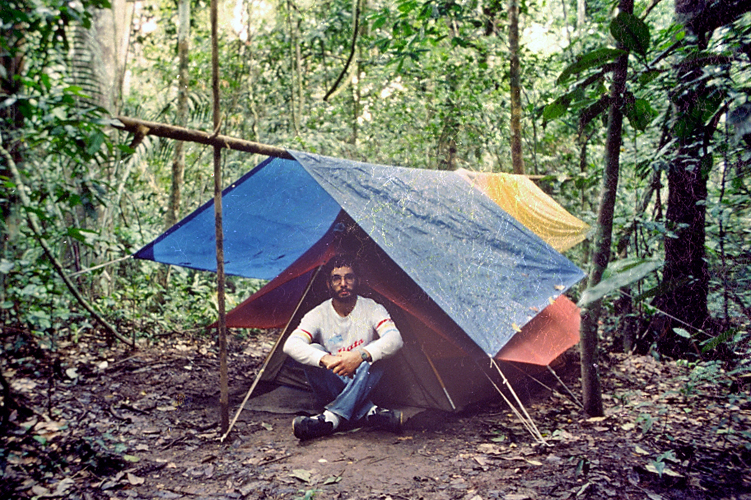Javier Domínguez
When I was 17 years old, in 1983 Lima, Peru, I took a camera (a Minolta HI-Matic 7s, a range finder camera released in Japan in 1966, the year I was born) from the closet of my long gone father. I remember going with my mother to a photographic store in Miraflores, Lima, to get an idea of how much she could get if she sold it. The guy from the store, very amicable, told my mother that it was a great camera and that it seemed to be in great condition. Mechanisms were working and the lenses were clean. But, he also told her that to sell it would be tricky and that she wouldn't get its real value in the transaction. He compared the camera to buying an old horse. It could perform its duties, but you never knew when it was going to dye, loosing your investment with it. So my mother, attending my pleas, let me keep it and use it instead. That's how all it began.
I started practicing and experimenting, and saving all my money for film and development. I went everywhere with my camera. I took pictures in my high school during class, at the gym, during recess. I would go with friends to fishing trips, athletic meets, anywhere I was invited as long as I could take pictures. I wanted to get exposed to as many different situations as possible so I could practice and learn from the experience. It was a rewarding approach.
Eventually, I was hired to do weddings and products. This gave me the opportunity to sustain my photography 'vice.'
 By the time I was doing catalogue pictures, I had obtained, thanks to a gracious gift by my godmother (yes, my real godmother, not the fairy kind,) a Canon FTb with three lenses (a Canon 35mm 1:2.8, a Canon 50mm 1:1.4, and a non-Canon 80-200mm 1:4-5.6.) For the products I took home to photograph, I liked using natural light from the windows of my dinner-living room that had a set of three large double-windows. The light came literally from everywhere and I could control some spots with reflectors and bounced light from a speedlight.
By the time I was doing catalogue pictures, I had obtained, thanks to a gracious gift by my godmother (yes, my real godmother, not the fairy kind,) a Canon FTb with three lenses (a Canon 35mm 1:2.8, a Canon 50mm 1:1.4, and a non-Canon 80-200mm 1:4-5.6.) For the products I took home to photograph, I liked using natural light from the windows of my dinner-living room that had a set of three large double-windows. The light came literally from everywhere and I could control some spots with reflectors and bounced light from a speedlight.
Around this time, I met a very good friend from whom I learned a lot about photography: Manfred Einsiedler. He was a mentor to me and taught me with his example and his excruciating need to attain perfection in his work.
By 1987, I went to Manu National Park armed with four years of experience, avid photography reading, and the Canon FTb. My trip to Cocha Cashu Biological Station in Manu National Park was a turning point in all aspects of my life. I spent six months in the jungles of Manu, living in a tent (see picture) and learning a great deal about the rainforest, photography, and myself. I took as many rolls of slide film as I could get my hands on. Because of my scarce resources and remoteness of the area, I had a set amount of film and only that. I had to be careful when shooting. I had learned already to be economic when using film. It was expensive for the means I had at that time. That fact gave me a great sense of which subject/composition can become a good picture and which are not worth spending film on. In a way, I think this is a good 'school' to follow. It makes you aware of what would become a great picture and trains your eye to search for it.
When I went back to Lima and developed the slide film I took in the jungles of Manu a new learning process started: evaluating and editing the results of the trip.
By 1988 I got my first Nikon. This was thanks to Dr. Charles Munn, PhD a researcher who worked for Wildlife Conservation Society at the time. He graciously purchased it for me at my request and brought it for me when he came to Peru that year. I owe him a lot for that. I sold the Canon equipment to be able to make the switch, and even then it took me a while to pay Charlie back. I got a Nikon FM2, a NIKKOR 28mm f/2.8 and a Novoflex Automatic Extension Bellows with the attachments to duplicate slides.

